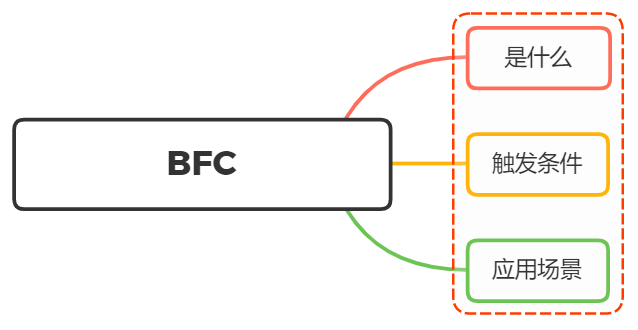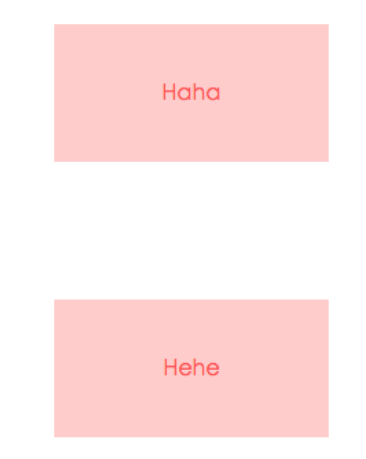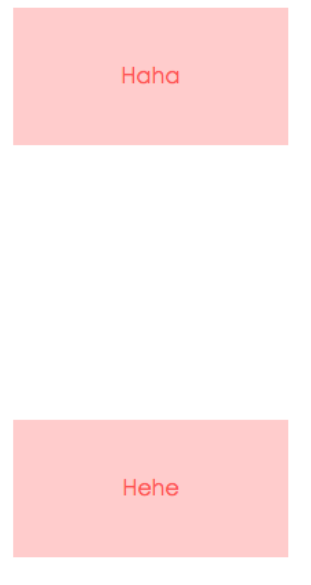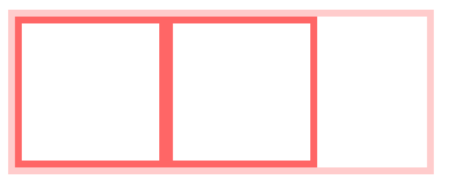面试官:谈谈你对BFC的理解?

一、是什么
我们在页面布局的时候,经常出现以下情况:
- 这个元素高度怎么没了?
- 这两栏布局怎么没法自适应?
- 这两个元素的间距怎么有点奇怪的样子?
- ......
原因是元素之间相互的影响,导致了意料之外的情况,这里就涉及到BFC概念
BFC(Block Formatting Context),即块级格式化上下文,它是页面中的一块渲染区域,并且有一套属于自己的渲染规则:
- 内部的盒子会在垂直方向上一个接一个的放置
- 对于同一个BFC的俩个相邻的盒子的margin会发生重叠,与方向无关。
- 每个元素的左外边距与包含块的左边界相接触(从左到右),即使浮动元素也是如此
- BFC的区域不会与float的元素区域重叠
- 计算BFC的高度时,浮动子元素也参与计算
- BFC就是页面上的一个隔离的独立容器,容器里面的子元素不会影响到外面的元素,反之亦然
BFC目的是形成一个相对于外界完全独立的空间,让内部的子元素不会影响到外部的元素
二、触发条件
触发BFC的条件包含不限于:
- 根元素,即HTML元素
- 浮动元素:float值为left、right
- overflow值不为 visible,为 auto、scroll、hidden
- display的值为inline-block、inltable-cell、table-caption、table、inline-table、flex、inline-flex、grid、inline-grid
- position的值为absolute或fixed
三、应用场景
利用BFC的特性,我们将BFC应用在以下场景:
防止margin重叠(塌陷)
html
<style>
p {
color: #f55;
background: #fcc;
width: 200px;
line-height: 100px;
text-align:center;
margin: 100px;
}
</style>
<body>
<p>Haha</p >
<p>Hehe</p >
</body><style>
p {
color: #f55;
background: #fcc;
width: 200px;
line-height: 100px;
text-align:center;
margin: 100px;
}
</style>
<body>
<p>Haha</p >
<p>Hehe</p >
</body>页面显示如下:

两个p元素之间的距离为100px,发生了margin重叠(塌陷),以最大的为准,如果第一个P的margin为80的话,两个P之间的距离还是100,以最大的为准。
前面讲到,同一个BFC的俩个相邻的盒子的margin会发生重叠
可以在p外面包裹一层容器,并触发这个容器生成一个BFC,那么两个p就不属于同一个BFC,则不会出现margin重叠
html
<style>
.wrap {
overflow: hidden;// 新的BFC
}
p {
color: #f55;
background: #fcc;
width: 200px;
line-height: 100px;
text-align:center;
margin: 100px;
}
</style>
<body>
<p>Haha</p >
<div class="wrap">
<p>Hehe</p >
</div>
</body><style>
.wrap {
overflow: hidden;// 新的BFC
}
p {
color: #f55;
background: #fcc;
width: 200px;
line-height: 100px;
text-align:center;
margin: 100px;
}
</style>
<body>
<p>Haha</p >
<div class="wrap">
<p>Hehe</p >
</div>
</body>这时候,边距则不会重叠:

清除内部浮动
html
<style>
.par {
border: 5px solid #fcc;
width: 300px;
}
.child {
border: 5px solid #f66;
width:100px;
height: 100px;
float: left;
}
</style>
<body>
<div class="par">
<div class="child"></div>
<div class="child"></div>
</div>
</body><style>
.par {
border: 5px solid #fcc;
width: 300px;
}
.child {
border: 5px solid #f66;
width:100px;
height: 100px;
float: left;
}
</style>
<body>
<div class="par">
<div class="child"></div>
<div class="child"></div>
</div>
</body>页面显示如下:

而BFC在计算高度时,浮动元素也会参与,所以我们可以触发.par元素生成BFC,则内部浮动元素计算高度时候也会计算
css
.par {
overflow: hidden;
}.par {
overflow: hidden;
}实现效果如下:

自适应多栏布局
这里举个两栏的布局
html
<style>
body {
width: 300px;
position: relative;
}
.aside {
width: 100px;
height: 150px;
float: left;
background: #f66;
}
.main {
height: 200px;
background: #fcc;
}
</style>
<body>
<div class="aside"></div>
<div class="main"></div>
</body><style>
body {
width: 300px;
position: relative;
}
.aside {
width: 100px;
height: 150px;
float: left;
background: #f66;
}
.main {
height: 200px;
background: #fcc;
}
</style>
<body>
<div class="aside"></div>
<div class="main"></div>
</body>效果图如下:

前面讲到,每个元素的左外边距与包含块的左边界相接触
因此,虽然.aslide为浮动元素,但是main的左边依然会与包含块的左边相接触
而BFC的区域不会与浮动盒子重叠
所以我们可以通过触发main生成BFC,以此适应两栏布局
css
.main {
overflow: hidden;
}.main {
overflow: hidden;
}这时候,新的BFC不会与浮动的.aside元素重叠。因此会根据包含块的宽度,和.aside的宽度,自动变窄
效果如下:

小结
可以看到上面几个案例,都体现了BFC实际就是页面一个独立的容器,里面的子元素不影响外面的元素